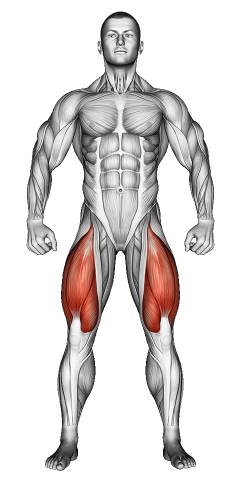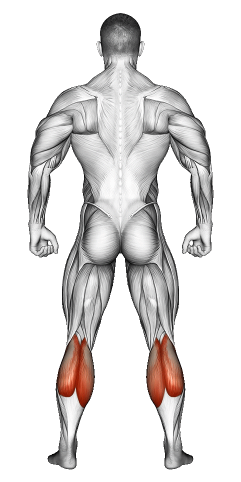Wall Sit: Video Tutorial & Exercise Guide

Written By: Claude Michael
Updated: Oct 13, 2024
| Workout | Wall Sit |
| Primary Muscle Group | Quads |
| Secondary Muscle Group | Calves |
| Equipment Required | Bodyweight |
| Force Type | Static |
| Mechanics | Compound |
| Exercise Type | Strength |
| Difficulty | Beginner |
Wall Sit: Video Tutorial & Exercise Guide
Secondary Muscles Group
Wall Sit: Step-by-Step Guide
- Step 1: Stand with your back flat against a wall, feet hip-width apart and positioned about 2 feet away from the wall.
- Step 2: Slowly slide down the wall by bending your knees, lowering your body until your thighs are parallel to the floor, as if you're sitting in an invisible chair. Ensure your knees are directly above your ankles and not extending past your toes.
- Step 3: Keep your back pressed firmly against the wall, and engage your core to maintain a neutral spine. Your hands can rest at your sides or on your thighs, but avoid using them to support your weight.
- Step 4: Hold this position for the desired amount of time, focusing on breathing steadily and maintaining tension in your legs.
- Step 5: To finish, push through your heels to stand back up, sliding back up the wall to return to the starting position.
Wall Sit: Overview
The Wall Sit is an isometric exercise that primarily targets the quadriceps, but it also engages the hamstrings, glutes, and core for stabilization. This static hold challenges your leg muscles by maintaining a seated position without the support of a chair. Wall Sits are great for building muscular endurance in the lower body and can be performed anywhere with minimal space and no equipment required.
This exercise is suitable for all fitness levels and is commonly used for strengthening the legs, improving posture, and increasing muscular endurance.
Wall Sits: Benefits
Wall Sits are an effective exercise for building strength and endurance in the quadriceps, glutes, and hamstrings. Since they require no equipment, they are highly accessible and can be incorporated into any workout routine. This exercise also enhances core stability, as your abs and lower back engage to maintain posture throughout the hold.
Additionally, Wall Sits improve mental toughness, as the longer you hold the position, the more it challenges your muscles and your ability to focus. They also help improve posture and knee stability, which can benefit your performance in other lower-body exercises and everyday movements.
Wall Sit: Pro Tips & Advanced Techniques
Focus on keeping your back flat against the wall and your knees directly over your ankles to protect your joints. For added intensity, try holding a weight (such as a dumbbell or weight plate) on your lap or increase the duration of the hold to further challenge your muscles. Another advanced variation is lifting one leg off the ground while maintaining the position, alternating between legs to engage each side of your lower body more intensely.
Wall Sits: Progression Plan
Beginner
Intermediate
Advanced
Wall Sit: Frequently Asked Questions (FAQs)
What muscles do Wall Sits target?
+Wall Sits primarily target the quadriceps, but they also engage the hamstrings, glutes, and core muscles for stabilization.
Are Wall Sits suitable for beginners?
+Yes, Wall Sits are beginner-friendly. They are low-impact and can be modified by adjusting the hold time or adding support for balance.
How often should I perform Wall Sits?
+Include Wall Sits in your lower body or core routine 1-2 times per week. They can be used as a finisher or a standalone exercise to build endurance.
What common mistakes should I avoid?
+Avoid letting your knees extend beyond your toes, as this can put undue pressure on the joints. Also, ensure your back remains flat against the wall to maintain proper form.
Can I make Wall Sits more challenging?
+Yes, you can hold a weight on your lap, increase the duration of the hold, or try lifting one leg off the ground to engage your muscles more intensely.
Share
Don’t Wish for It, Work for It – Join the FlexXP Newsletter Today!
Thank you for signing up for the FlexXP Newsletter!
This site is protected and the Google Privacy Policy and Terms of Service apply.

